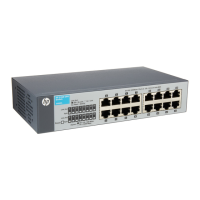143
Display information about the security
associations established with RSVP
neighbors.
display rsvp authentication
[
from
ip-address ] [
to
ip-address ] [
verbose
]
Di
splay information about CRLSPs
established through RSVP.
display rsvp lsp
[
destination
ip-address ] [
source
ip-address ] [
tunnel-id
tunnel-id ] [
lsp-id
lsp-id ] [
verbose
]
Display information about RSVP neighbors.
display rsvp peer
[
interface
interface-type
interface-number ] [
ip
ip-address ] [
verbose
]
Display information about RSVP resource
reservation
requests sent to upstream
devices.
display rsvp request
[
destination
ip-address ] [
source
ip-address ] [
tunnel-id
tunnel-id ] [
prev-hop
ip-address ]
[
]
Display information about RSVP resource
reservation states.
display rsvp reservation
[
destination
ip-address ]
[
source
ip-address ] [
tunnel-id
tunnel-id ] [
nexthop
ip-address ] [
verbose
]
Display information about RSVP path states.
display rsvp sender
[
destination
ip-address ] [
source
ip-address ] [
tunnel-id ] [
lsp-id ] [
]
Display RSVP statistics.
display rsvp
statistics
[
interface
[ interface-type
interface-number ] ]
Clear RSVP security associations.
reset rsvp authentication
[
ip-address
ip-address ]
Clear RSVP statistics.
reset
rsvp
statistics
[
interface
[ interface-type
interface-number ]
RSVP configuration examples
Establishing an MPLS TE tunnel with RSVP-TE
Network requirements
Switch A, Switch B, Switch C, and Switch D run IS-IS.
Use RSVP-TE to create an MPLS TE tunnel from Switch A to Switch D.
Figure 37 Network diagram
Vlan-int1
Vlan-int1
Vlan-int2
Vlan-int2
Vlan-int3
Vlan-int3
Loop0
Loop0
Loop0
Loop0
Switch A
Switch B
Switch C
Switch D

